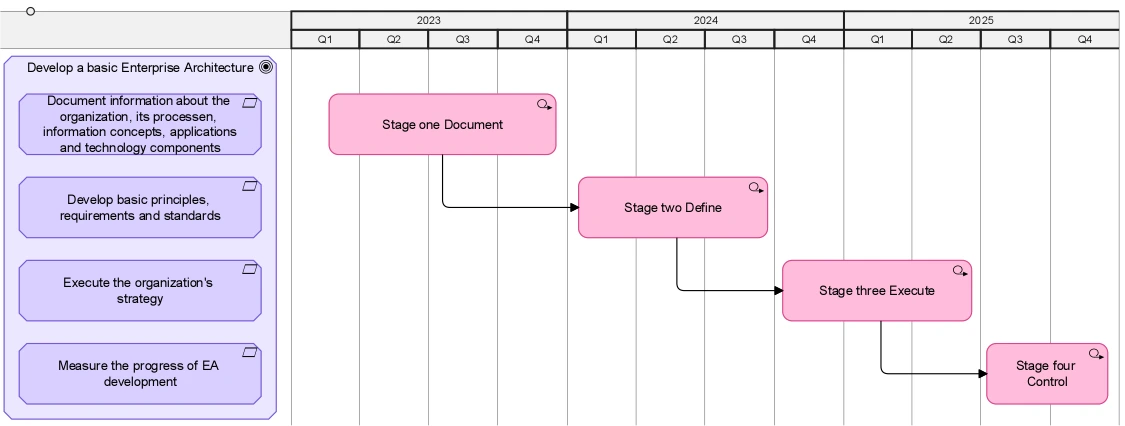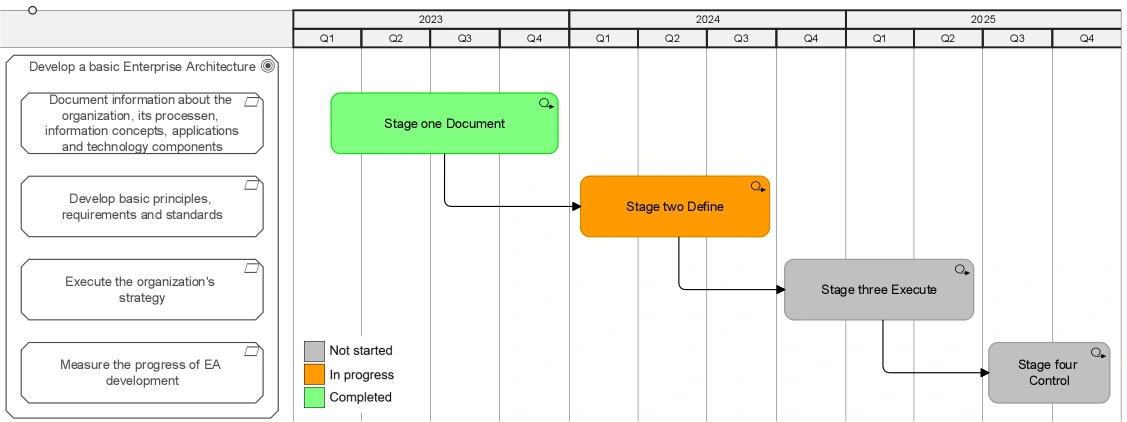An Architecture Roadmap is a timeline and visualizes all the initiatives that need to be completed to achieve the organization’s objectives. A Roadmap consists of previously defined initiatives in the form of work packages. The initiatives in the Roadmap are related to the organization’s goals and objectives.
Owners and (progress) states can be assigned to the work packages. Thus, a Roadmap can be used to monitor the progress of the implementation of the organization’s strategy. It can also be used to visualize the cost of achieving the goals and objectives. By including the cost of executing the work packages as an attribute to the elements, a Roadmap can show how this relates to the realization of the intended results. Having an overview of the costs per work package can help prioritize projects or programs.

Applying the method
Using a Work Package Portfolio Map, a first attempt at a Roadmap can be made. In order to do so, place the goals or objectives on the left side of the Roadmap (vertical) and place the work packages from the Work Package Portfolio Map in the timeline area (horizontal). Then, the Roadmap can be enriched by adding additional properties to the work packages. Examples include owners of the activities (business units or business roles), potential costs, and progress states (not started, pending, completed, canceled).
By adding additional properties to the work packages, it becomes possible to create cross sections and gain insight into who is responsible for what. This is helpful in monitoring the progress of the organization’s goals and objectives. For example, color views can be used to visually illustrate the progress of projects. An example of a progress view is shown in the figure below.

Of course, the primary purpose of an architecture tool is to create architecture models and diagrams. An architecture tool is not a project management tool. It can create and display roadmaps to illustrate or justify project, program, or portfolio initiatives. However, it never replaces a project management plan or project progress reports.
More information
For additional information about creating an Architecture Roadmap, please refer to Chapter 8, Section 8.4.2, of my book Getting Started with Enterprise Architecture.
